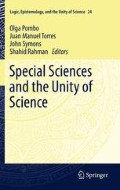Abstract
We live in a symbiotic world, and one of the key characteristics of the biological systems is to establish associations and connections with other organisms. This manifestation is one of life’s main characteristics and its diversity. In a way, life has not established itself or developed to exist alone. Since the introduction of the symbiosis concept by Anton de Bary in 1878 and the new theoretical formulation on the field – symbiogenesis – by Constantin Merezhkowsky, in 1909, this domain of science has been a place of controversy and discussion. The symbiogenesis concept was a landmark for the development of further studies on biology and evolution, that the most remarkable example was the development of the Serial Endosymbiotic Theory (SET) by Lynn Margulis in 1967. Throughout the twentieth century, biologists have generally considered symbiosis as a curiosity. Its study fell largely outside the conceptual and technical framework of biology, and namely of neo-Darwinism. However, most living forms have symbiotic relationships with microorganisms, and so symbiosis seems to play a very important role in the origin, organization and life evolution. In this sense, evolutionary changes can be explained by an integrated and synergistic cooperation between organisms, in which symbiosis acts, not as an exception, but as the dominant rule in nature. Without denying many of the Darwinist principles, the worse thing we could do within the study of the process of evolution would be to mix up or limit evolution to the Darwinist or neo-Darwinist perspective. Other evolutionist approaches exist and it is necessary for them to be deepened and discussed within biological and social sciences. In this sense, we would like to bring a set of principles and data that could be integrated in a Symbiogenic Theory of Evolution that could contribute towards a new epistemological approach of the symbiotic phenomenon in the evolutive context. This, in our point of view, could be the beginning of a new paradigm in science that rests almost unexplored.
Access this chapter
Tax calculation will be finalised at checkout
Purchases are for personal use only
References
Bouchard, F. 2007. What is a symbiotic superorganism and how do you measure its fitness? Abstracts of the ISHPSSB meeting, University of Exeter, Exeter, UK, July 25–29, 2007, 45.
Carrapiço, F. 2010. How symbiogenic is evolution? Theory in Biosciences 129: 135–139.
Carrapiço, F., L. Pereira, and T. Rodrigues. 2007. Contribution to a symbiogenic approach in astrobiology. Proceedings of SPIE 6694: 669406-1–669406-10.
Chapman, M.J., and L. Margulis. 1998. Morphogenesis by symbiogenesis. International Microbiology 1: 319–326.
De Bary, A. 1878. Ueber Symbiose. – Tageblatt 51. Versamml. Deutscher Naturforscher u. Aerzte. Cassel 1878: 121–126.
Dubos, R., and A. Kessler. 1963. Integrative and disintegrative factors in symbiotic associations. In Proceedings of the thirteenth symposium of the society for general microbiology, ed. P.S. Nutman and B. Mosse, 1–11, London: Cambridge University Press.
Lederberg, J. 1952. Cell genetics and hereditary symbiosis. Physiological Reviews 32: 403–430.
Margulis, L., and R. Fester. 1991. Symbiosis as a source of evolutionary innovation, Speciation and morphogenesis. Cambridge: The MIT Press.
Mayr, E. 1982. The growth of biological thought. Diversity, evolution and inheritance. Cambridge: Harvard University Press.
Merezhkowsky, C. 1905. Uber Natur und Ursprung der Chromatophoren im Pflanzenreiche. Biologisches Centralblatt 25(593–604): 689–691.
Merezhkowsky, C. 1909. The theory of two plasms as foundation of symbiogenesis. A new doctrine on the origins of organisms. In Proceedings studies of the imperial Kazan University, vol. 12, 1–102, Publ. Office Imp. Univ.
Sagan, L. 1967. On the origin of mitosing Cells. Journal of Theoretical Biology 14: 225–274.
Sapp, J. 2003. Genesis: The evolution of biology. New York: Oxford University Press.
Sapp, J. 2004. The dynamics of symbiosis: An historical overview. Canadian Journal of Botany 82: 1046–1056.
Speidel, M. 2000. The parasitic host: Symbiosis contra neo-Darwinism. Pli 9: 119–138.
Author information
Authors and Affiliations
Corresponding author
Editor information
Editors and Affiliations
Rights and permissions
Copyright information
© 2012 Springer Science+Business Media B.V.
About this chapter
Cite this chapter
Carrapiço, F. (2012). The Symbiotic Phenomenon in the Evolutive Context. In: Pombo, O., Torres, J., Symons, J., Rahman, S. (eds) Special Sciences and the Unity of Science. Logic, Epistemology, and the Unity of Science, vol 24. Springer, Dordrecht. https://doi.org/10.1007/978-94-007-2030-5_7
Download citation
DOI: https://doi.org/10.1007/978-94-007-2030-5_7
Published:
Publisher Name: Springer, Dordrecht
Print ISBN: 978-94-007-2029-9
Online ISBN: 978-94-007-2030-5
eBook Packages: Humanities, Social Sciences and LawPhilosophy and Religion (R0)

